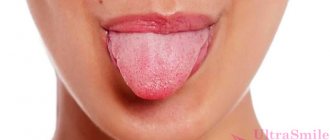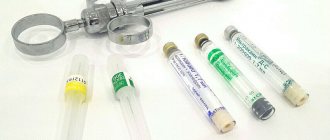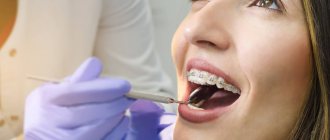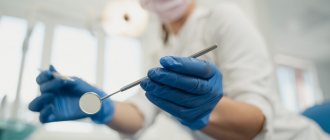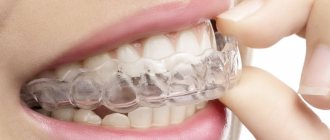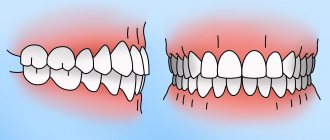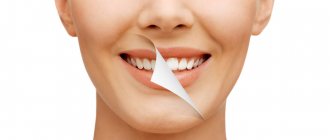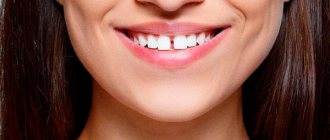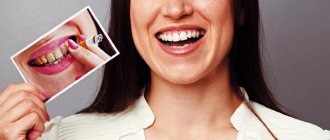From this article you will learn:
- Is it possible to cure caries without drilling with a drill,
- laser and ozone treatment in dentistry,
- the use of enzyme gels to remove caries.
Caries therapy in dentistry is a process that, before filling, requires the complete removal of hard tooth tissues affected by caries. Otherwise, caries will appear under the filling and will proceed unnoticed until pulpitis develops (inflammation of the nerve in the tooth). Removal of carious tissues is traditionally carried out using a drill and special abrasive burs, which seem to cut off the hard tissues of the tooth.
Drills make an unpleasant sound and make you wait for pain to occur, so alternative methods have been developed for patients with high anxiety that allow you to treat caries without a drill. In this case, a laser or a special enzyme gel can be used to remove carious tissue, and ozone can be used to disinfect tooth tissue. These methods make it possible to avoid unpleasant sound and vibration during treatment, and the use of a laser does not require local anesthesia.
Laser treatment of caries: photo
Devices for the treatment of caries without traditional drilling of the tooth with a drill appeared relatively long ago (about 15-20 years ago). However, most dental clinics still do not have these devices, and the demand for unusual treatment of caries without a drill has not become widespread. The reasons for this are quite simple: despite certain advantages, laser and ozone are still inferior to modern drills. And that's why…
Laser in dentistry
There are several types of dental laser: diode, argon, neodymium, erbium, carbon dioxide. The difference between the devices is in power, wavelength, point or constant flow of pulses. Each type of laser beam is used for specific procedures. It is used with equal success for therapeutic treatment and surgical intervention.
Delicate but effective
Over the centuries, the arsenal of dentists has only been improved, but fundamentally has not changed. The doctor acted mechanically and chemically. But with the arrival of lasers in the dental office, doctors received a fundamentally new tool - a light beam.
The power of its impulses is such that the cells and tissues affected by them instantly evaporate (since they consist mainly of water). They just disappear! By moving the beam, you can influence the tissue of any area. By changing the strength of the light beam, it is possible to process tissue to any desired depth. And do you understand the difference? It’s one thing to have a metal cutter rotating at great speed, and quite another to have a soft, imperceptible beam of light.
While fulfilling its main purpose, the laser also ideally sterilizes the surface on which it “works.” Therefore, the risk of subsequent infection is minimal.
In general, laser dentistry makes it possible to fulfill the dream of any patient: so that it “doesn’t hurt” and so that “everything goes away.”
True, some, impressed by Star Wars, are afraid of laser operations... Can a medical laser injure tissue? Tell me, can a scalpel or drill cause damage? The answer is obvious - they can. Any tool has the potential to cause injury. It matters who has it in their hands. In a clinic with a good reputation, the patient has nothing to fear.
Therapeutic laser dental treatment
In therapeutic dentistry, laser therapy is used in the following cases:
- Relieving inflammation.
When treating gingivitis, stomatitis or herpes, electromagnetic waves are directed to the source of infection and destroy pathogenic bacteria. - Sterilization.
Periodontal pockets and tooth canals are treated with a diode laser before installing a filling. - Treatment of caries.
Affected tissues are effectively removed using an erbium apparatus. - Filling.
Curing of light polymer fillings occurs under the influence of an argon laser. - Teeth whitening.
The laser beam activates the hydrogen peroxide-based whitening gel without heating the tooth tissue, that is, without the risk of overheating or burning the pulp. Thanks to the local pulse effect, the patient does not experience discomfort during the procedure.
Treatment of caries with ozone –
Non-contact treatment of caries with ozone consists in the fact that tissues affected by caries are not removed mechanically (or their removal is minimized), but are disinfected using ozone molecules. The latter is triatomic oxygen, which is capable of destroying 99.99% of all cariogenic microorganisms in the carious cavity. You can see what a device for treating caries with ozone looks like in the video below.
The course of the procedure for treating caries with ozone - first, a silicone cap specially provided by the manufacturer is applied to the tooth (Fig. 5-7), from under which air is pumped out and something close to a vacuum is created. Then ozone is supplied to the cap, which acts on the microflora, killing 99.9% of all pathogenic bacteria. Within 20-30 seconds, all cariogenic microorganisms die.
- The advantages of treating caries with ozone are that you can treat teeth without a drill (but only very small carious defects), in other cases you will still have to drill, which means you will have to do anesthesia. That's basically it.
- Disadvantages of dental treatment with ozone: in 99% of cases, teeth will still have to be drilled.
If you do not drill, a large amount of tissue may remain inside and outside the tooth, which is relatively softened and cannot bear the full load. Imagine that you are placing a permanent filling on demineralized soft dentin or enamel (and it is hard). As a result, when teeth are closed and when chewing hard food, the load placed on the filling will be transferred to the surrounding tissues (enamel and dentin), which are softened and cannot withstand such a load. There will be pressure, the filling will fall out... As a result, the tooth will have to be treated again.
Conclusions: the use of such devices is advisable only in pediatric practice, when it is not possible to use a drill.
In this case, the softened dentin and enamel are first scraped out with curettage spoons, but before this, it is optimal to apply a special enzyme gel into the carious cavity, which dissolves the carious tissue. And only after this the remaining tooth tissue is disinfected with ozone and a filling is placed. How enzyme gels work – read below.
Application of laser in dental surgery
During surgery, a laser device is used for painless and bloodless tissue dissection—during the procedure, the beam instantly seals the vessels. The incision is smaller and thinner than with a scalpel, so no stitches are required during the operation, and after the wounds heal there are no scars or scars. In dental surgery, laser is used to solve the following problems:
- Removal of tumors.
The liquid inside the papilloma, cyst or fibroma is evaporated under the influence of electromagnetic waves. - Carrying out dental implantation.
Thanks to the laser, implant installation is delicate. Thanks to laser implantation, the soft tissue contour is better preserved. - Plastic surgery of the frenulum of the lips and tongue.
The fold is excised lengthwise or crosswise depending on the clinical case. - Gum correction.
Excess tissue is trimmed before prosthetics, filling or orthopedic treatment. The laser is also used for gum surgery after implantation or if there are other indications.
Terrible drills are a thing of the past
The notorious drills, which with their sound could scare away all patients waiting for an appointment, and with the “elegance” of their work resembled a jackhammer, are a thing of the distant past. Today, dental clinics are equipped with modern, completely silent units that do not get on the nerves of patients with unpleasant buzzing and disgusting vibration. Even if the patient has to drill a tooth, today this can be done without noise or discomfort. Agree that the lion's share of hostility to dental treatment was formed precisely because of the fear of treating teeth with a disgustingly noisy “dental jackhammer.” Now that the likelihood of encountering an old-generation drill has been reduced to almost zero, you can go to the dentist with confidence and confidence.
Other equipment in dental clinics has also changed. Today, treating teeth has become much more pleasant and convenient than just 10 years ago. And technologies are constantly developing: new, comfortable, painless solutions appear. Today, prosthetics are not at all as uncomfortable and time-consuming as they used to be. It is quite possible to install a prosthesis without grinding the teeth, and implantation has reached such a high level that the degree of difficulty for the patient is similar to a regular tooth extraction.
But, of course, it’s better not to resort to prosthetics - if you pull yourself together from time to time and still visit the dentist for treatment, there is every chance of meeting old age with your own teeth.
Dentist at the 32 Dent clinic Mukhin Pavel Nikolaevich: “As paradoxical as it may sound, a person who is afraid of dental treatment needs to go to the dentist much more often than a “fearless” patient. Regular visits to the doctor will help to identify caries in time and cure it when neither drills nor dental pulp removal and canal cleaning are needed. Professional hygiene and annual medical examinations will help you maintain your dental health at a decent level and save yourself from serious dental treatment.”
Indications and contraindications
With the help of electromagnetic waves, it is possible to achieve positive therapeutic results even in the most difficult situations, and the absence of the need for anesthesia allows the device to be used for people with allergies to painkillers. The use of laser in dentistry is one of the safest and most effective methods of treatment, which is indicated for almost everyone. However, there is still a small list of contraindications.
- Nervous system disorders
- Late stage diabetes mellitus
- Kidney failure
- Oncological diseases
- Pregnancy (1 - 6 months)
- Open tuberculosis
- Elevated thyroid hormone levels
- Allergy to sun rays
Attention!
Insufficient qualifications of a specialist and failure to comply with safety rules significantly increase the risk to the patient’s health during laser treatment. Contact only trusted clinics, where your eyes are protected from radiation with special glasses, and the room is brightly lit during the procedure.
Dental treatment is not painful!
Some parents have an erroneous stereotype that dental treatment is always painful, so they are in no hurry to take their child to the doctor. The specialists of our network of clinics declare with full responsibility: “Treatment of teeth does not hurt!” For pain relief, we use anesthetics that are effective but safe for children’s health.
There are two reliable options for pain relief:
- administration of an anesthetic drug by injection into the gum area (infiltration anesthesia);
- applying an anesthetic in the form of a gel or aerosol to the gums. As a rule, this method of anesthesia is used for children under 4 years of age.
If a child is afraid of injections, then first a gel is applied to the gums, and only then an injection is given.
Important: before visiting the dentist, the child should be prepared for the upcoming communication with the doctor. It is necessary to explain that it will not hurt him, that treatment is necessary, otherwise his teeth will grow unsightly.
Advantages of the method
Today, laser dental treatment in Moscow is widespread in dentistry. Despite the high cost, it is deservedly popular among patients who appreciate the advantages of laser treatment.
- Delicacy.
The absence of unpleasant noise and vibrations makes the operation easier. - Short duration of procedures.
Depending on the nature of the manipulations, the process takes from two to twenty minutes. - No need for anesthesia.
The device does not touch the tissues of the teeth and gums, but acts at a distance, so there is no pain from mechanical action. - Accuracy.
The rays are directed only at the affected tissues, healthy areas are not damaged. - Reduced injury rates.
The laser seals the vessels and edges of the wound, so even complex operations do not require stitches and bandages to stop bleeding. - Fast rehabilitation.
After treatment, the incision heals in a matter of hours and is not accompanied by swelling or pain.
Application of enzyme gel –
Instead of a drill, special enzyme gels can be used to remove caries, which dissolve only the tissues affected by caries, without touching the healthy hard tissues of the tooth. This is an excellent tool for use especially in children's practice. There are a large number of manufacturers of such products, and one of the options is BRIX 3000 enzyme gel, the principle of operation of which you can see in the videos below.
The enzyme gel is introduced into the carious cavity for about 2 minutes, after which the softened carious tissues are scraped out of the carious cavity using a special tool. After this, the cavity is washed out and filling of the tooth can begin. True, in some cases it may be necessary to use a drill to smooth out the edges of the tooth enamel hanging over the carious cavity.
Application of enzyme gel –
Treatment of cysts and granulomas with laser
Granuloma usually occurs as a result of poor treatment of caries and pulpitis. The disease is asymptomatic at the first stage, and is later accompanied by swelling of the gums, pain and darkening of the enamel. When treating dental granuloma with a laser, the affected area is drilled and an electromagnetic beam is sent into the hole, destroying the contents of the cyst and sealing the vessels. The doctor then installs a filling.
Without timely treatment, the granuloma develops into a cyst, which can provoke even more serious complications. Gentle treatment of dental cysts with a laser is considered a good method, as it allows you to save the tooth. The procedure takes place without pain, stress and stitches. In addition, treatment of a dental cyst with a laser without removal eliminates the risk of re-development of inflammation. The patient’s comfort and the absence of complications justify the additional costs, because the price when treating a dental cyst with a laser is higher than when using other methods.
Causes of carious tooth decay
The Dentalis clinic provides modern dental services that do not require the use of technologies and medications that are potentially dangerous to the patient. This also applies to the treatment of caries - a disease that causes gradual destruction of the hard tissues of the tooth, which can provoke inflammation of the gums, as well as dental nerves.
The disease develops in several stages; in the early stages, it can be eliminated with conservative treatment without removing all or part of the dental bone. The Dentalis doctor will conduct therapy and achieve complete restoration of the health of the dental bone - without surgical intervention. In later stages, laser treatment of caries is necessary .
The reasons leading to the development of the disease are:
- Mechanical damage to the integrity of the enamel, leading to the emergence of an area favorable for the proliferation of microorganisms.
- Insufficiently thorough oral care: neglect of regular brushing, rinsing, and flossing.
- Tooth enamel is not naturally resistant to carious destruction.
Previously, painful methods were used for surgical treatment of the disease, in particular, drilling with a drill. The dental laser currently in use does an excellent job of removing lesions even in relatively severe cases: consult Dentalis to find out if this modern method is the only way to do it.
How much does laser dental treatment cost?
As a rule, prices for laser dental treatment in Moscow depend on the type of dental disease and the severity of the pathology. You must be prepared for the fact that in any case it will be significantly higher than when using classical methods. Treatment of caries at the initial stage of the disease will cost from 800 rubles. The price for treating a dental cyst with a laser without removal will be approximately 1,500 to 2,000 rubles. For laser whitening you will have to pay from 8,000 to 11,000 rubles.
Obviously, the high cost of therapy is the only drawback of this technology. However, numerous rave reviews about laser dental treatment confirm the fact that patients are willing to pay for comfort, efficiency and peace of mind, the absence of irritating drill sounds and the frightening prospect of using anesthetics.
Strengthens, heals, removes
The new tool came into practice not so long ago. But it is already clear that laser dentistry centers effectively perform dozens of different procedures.
One of the most common diseases is periodontitis. This is an inflammation of the gum tissue surrounding the tooth. Bacteria enter here, under the cover of tartar they destroy soft and bone tissue, the tooth bleeds and becomes loose. The laser beam easily penetrates the “pocket” around the tooth, cuts off tissues affected by microbes, and sterilizes the entire surface of the pocket. This creates a sticky film. It tightly glues the gum to the tooth, and neither bacteria nor food debris can penetrate here.
Indications for use
- Primary carious lesions in the area remote or close to the pulp;
- Secondary carious lesions that contain composites (smaller cavities or remains of composite) or cements;
- Conditioning the dentin surface to improve the adhesion of fillings in cavities that have been prepared using a laser or rotary instrument;
- Preventive sealing of molars and premolars not affected by caries;
- Extended fissure sealing after preliminary preparation of carious fissures;
- Reducing the number of microorganisms in the root canal after mechanical treatment during vital extirpation or treatment of an infected canal.
Materials and anesthesia
The days of using silicate cement and amalgam, which were characterized by high solubility and low hardness, are a thing of the past. In modern dentistry, in the treatment of dental diseases, composite materials and light/chemically cured ionomer cements are used, which have excellent aesthetics, fixation, and strength, guaranteeing reliable filling.
Anesthesia during dental procedures can reduce the patient’s fear, eliminate pain, reduce the risk of complications, and make the dentist’s work easier. The choice of anesthetic is determined by the allergic/somatic status of the patient. Different types of anesthesia are used: general, local, combined.
Typically, injection anesthesia is performed with solutions of lidocaine, trimecaine, novocaine with adrenaline - these drugs inhibit pain, reduce bleeding, and constrict blood vessels. According to indications, premedication is carried out to eliminate panic, fear, psycho-emotional agitation, prevent an allergic reaction, and enhance the effect of the anesthetic.
What kind of filling is used for laser filling?
After removing caries, thoroughly cleaning and disinfecting the tooth area, a biocompatible (biologically suitable for the body) glass composite filling that matches the color of the tooth is inserted into it. Next, another laser is used to harden and bond this material to the tooth structure, after which the filling becomes part of it. In this way, the tooth is restored and regains its original beauty; normal chewing processes and biting will not damage or weaken it.
The biocompatible substance that bonds to the tooth will not weaken or discolor over time, nor will it crack or leak as is common with other fillings. This is because the “laser filling” is made of durable tooth-like materials and strong laser bonds that hold it in place. The tooth itself is not damaged or weakened as with traditional drilling and filling.
Don't forget that the laser filling substance and the way it is implanted into the tooth help preserve the natural structure of the tooth for biting and chewing.
Diagnostics
It is carried out by examination (percussion, probing, determining the mobility of organs), collecting an anamnesis, additional methods of examination:
- radiography
. Allows you to visualize defects of the approximal surfaces, obtain a clear picture of the marginal segments of the alveolar processes of the jaws; - EDI
. Electroodontodiagnosis helps to differentiate the types of disease and determine its complications; - laser fluorescence
. The technology reveals structural changes during demineralization on the occlusal planes; - light fluorescence
. The technique in dentistry is designed for early detection of a lesion, determining its size, depth, and location.
There is no ideal diagnostic technique today; an integrated approach to making a diagnosis is required. A qualified dentist will always suggest that the patient undergo several additional examinations in order to analyze the current situation and prescribe an effective therapeutic regimen.
How laser therapy affects tissue: biopsy results
Research on the effectiveness of laser therapy is carried out not only by measuring the effectiveness in patients, but also in laboratories, at the cellular level. One of these experiments made it possible to track changes in the cellular structure of the periodontium over 5 sessions of laser exposure and, based on its results, determine the effectiveness of therapy.
Histological and cytological studies of tissues before the start of treatment showed that the mucous membrane was affected by the inflammatory process, wound healing was sluggish, and there were practically no full-fledged cells.
After two laser sessions, the healing process intensified. After 4 sessions, the studied samples already showed signs of bright coagulations, a gradual restoration of erythrocytes and leukocyte cells.
After the 5th session of laser therapy, a biopsy showed the presence of full-fledged cells - red blood cells, leukocytes, and fibroblasts. The results indicate the patient's complete recovery.
Possibilities of laser dentistry
Dentistry using laser is universal. Today, professionals can treat not only caries, but also various gum diseases and combat many problems. Modern technologies allow for high-quality hygiene.
Is the tooth badly damaged? The laser will help cure it. Moreover, you do not have to visit the clinic 5-10 times. Usually 1-2 receptions are enough.
Are you correcting your bite? The laser will allow the doctor to take an ideal impression of the teeth and accurately select the necessary braces. Your child will be captivated by the process. He will not resist correcting the bite.
Do you want to save your child from gum disease and other problems? In this case, it is also worth using the services of laser dentistry.
Do you need oral surgery? And in this case, you can use modern technologies. They are suitable, for example, for trimming the frenulum of the tongue. Moreover, all operations are carried out in the shortest possible time and do not cause pain or discomfort. The interventions do not require long-term recovery and do not lead to severe bleeding or the occurrence or spread of infection.
Flaws
- The inability of the operator to qualitatively consider all the small details in the area of manipulation. This is due to the need to wear special safety glasses;
- There is a high probability of gum damage during laser operation. A dentist working with laser equipment must be very careful and careful;
- The need to combine a drill with a laser when filling a tooth. The laser is not able to adjust the installed filling to the bite and perform its final polishing;
- High cost of the procedure compared to traditional treatment methods.
